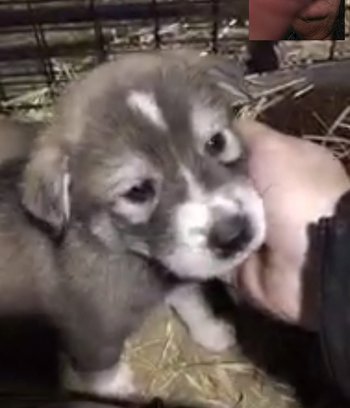The Mysterious Canine Mind: How Do They Know?
By Jay Stoeckl, Chief Assistant to the Assistant, Assistant Breeder, Dec. 15, 2023
I want to first thank all of you who shared your amazing stories! I hope to share a few of them next week as they are incredible.
The shared stories all spoke of a dog’s innate ability to understand the pain of others. In this letter, I want to explore something more enigmatic. How Do They Know? There are things a dog knows that have nothing to do with an emotional response. I’ll set this stage with the following tales:
You recall my story of dropping off Trixie. The part of that tale I did not share has to do with the puppy I brought. When I pulled into their driveway, evening had already arrived. The family who had Trixie came out to welcome their new puppy.
I opened the side door where three remaining puppies sat looking up at us. I opened the crate door. Only the puppy who was to remain with the family stood up and got out of the crate! The other two stayed behind.
How did she know?
This was not a one time occurrence. The first time I noticed this was when I set out on a trip a few years ago with about nine puppies in tow. The new owner was a young man living in Reno, Nevada. Because I was heading east, he agreed to meet me at his parents house just outside of Boise, Idaho. His parents had one of our dogs already.
In that setting, the parents had a desert landscaped acre all enclosed by a state-of-the-art fence. They could welcome my vehicle into their space and close the gate behind me. This meant I could take all nine puppies out to run and play—a needed break when you’re traveling long days in a car.
Whenever I let puppies out to pee, they follow me like ducklings, never more than six feet away. It is a part of their instinct to remain close to their parent figure.
The new owners did pay special attention to their new puppy, but not enough to bind their new puppy to them. I was only there for a half hour or so. Then when it was time for me to move on, I walked from the front of their house to the car. As expected, the brood followed at my heels like ducklings. Puppies do that. They cannot stand to be too far away from the alpha wolf.
There at the open door, I begin putting in eight puppies into the crates. The ONLY puppy who did not follow like a duckling, was the puppy who was being dropped off.
So, two questions come up. How did this puppy know he/she was going to remain behind? Why didn’t other puppies playing alongside him not remain where the fun was happening? No, the eight that were continuing the journey followed me, the one remaining somehow knew he was to remain with that family.
This occurred as well in a suburb of Atlanta. The new owner lived in a cul-de-sac. She had a fully fenced back yard and invited me to allow the brood to have some play time. Yet when it was time to go, the one being dropped off remained with the lady. This was not because she held her or called her, the puppy just… somehow… knew.
So, what is the takeaway from this? Why is this important?
When Jenn and I were still living in Colorado, one of our breeding dogs Sprinkle was in need of a home. A priest in Durango was all too willing to adopt her.
He had had issues with a previous lab mix. The dog was “out of control.” He had tried professional trainers, one after another, but none of them worked. From the moment a stranger approached his front door, the dog would be all over the place. And if the front door was open, the dog would jump up on the stranger.
Jennfer said she would be right over.
And here is what happened. Before approaching the front door, Jennifer projected in her mind “I am the Pack Leader.” Along with this she saw herself as the person of authority. When she opened the front door, she walked in with an authoritative attitude.
Do you know what this out-of-control dog did?
He looked up at her, immediately lay his body down, and rolled onto his back exposing his tummy. Submissive behavior. The priest was beside himself. He had never seen such a thing.
The trick to controlling the over-active dog was to impose your position to him. You never find this advice in any training video or manual. Yeah, Caesar Milan calms an aggressive dog by showing him he has no fear. It goes along this line.
If a dog can read you at a deeper level, you might be able to activate communication with them without the spoken language. Am I an expert on this? Oh, no. I am only projecting my impressions based on experience. I don’t understand the process, but know it can have positive impact in developing and nurturing your canine relationships.
Right now, Yeti is done with her play and is curled up next to me. I look at her and am in awe of the dog she is turning out to be. Perhaps she’ll be a character in my next novel. We will see. One thing remains, whether I tell her in words or not, she knows how much I have come to love her on a much deeper level.
Jennifer Stoeckl is the co-founder of the Dire Wolf Project, founder of the DireWolf Guardians American Dirus Dog Training Program, and owner/operator of DireWolf Dogs of Vallecito. She lives in the beautiful inland northwest among the Ponderosa pine forests with her pack of American Dirus dogs.